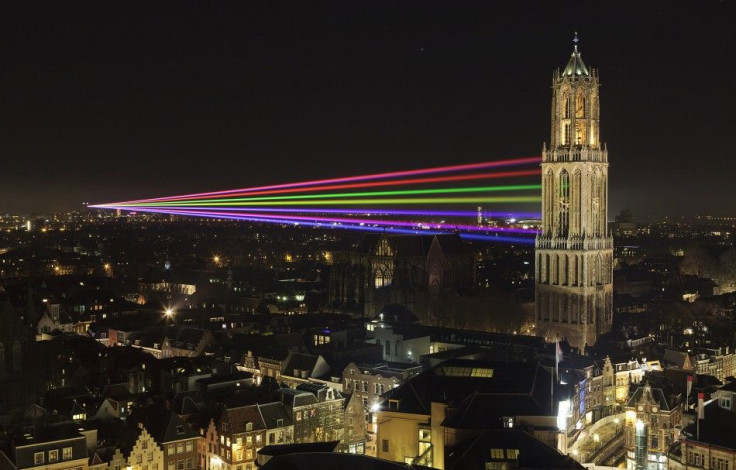German scientists laser their way again; transfer 700 DVDs in 1 sec
With 26 terabits per second speed, it would be possible to transmit up to 400 million telephone calls at the same time

Scientists at the Karlsruhe Institute of Technology (KIT), Germany, have succeeded in transferring a record 700 DVDs in only one second making it the highest bit rate on a laser, a report said.
The scientists successfully encoded data at a rate of 26 terabits per second on a single laser beam and transmitted it over a distance of 50 km, and then decoded it.
The process developed by KIT allows transmitting the contents of 700 DVDs in one second only and has become the largest data volume ever transported on a laser beam.
The team of scientists comprised of Professor Jürg Leuthold, who is heading the Institutes of Photonics and Quantum Electronics and Microstructure Technology at KIT, Professors Wolfgang Freude, Christian Koos, David Hillerkuß, and René Schmogrow.
With this experiment, the KIT scientists in the team of Professor Jürg Leuthold have beaten their own record on high-speed data transmission in 2010 when they exceeded a limit of 10 terabits per second which equaled a data rate of 10,000 billion bits per second.
A new data decoding process, called the opto-electric decoding method, is based on optical calculations at the maximum data rates to break down a high data rate to smaller bit rates that can be processed electrically later.
“The challenge was to increase the process speed not only by a factor of 1000, but by a factor of nearly a million for data processing at 26 terabits per second,” said Leuthold. “The decisive innovative idea was optical implementation of the mathematical routine.”
Calculations made in the optical range turned out to be not only fast but also energy-efficient as energy is required only for the laser and few other steps.
“A few years ago, data rates of 26 terabits per second were deemed utopian even for systems with many lasers and there would not have been any applications. With 26 terabits per second, it would have been possible to transmit up to 400 million telephone calls at the same time. Nobody needed this at that time. Today, the situation is different.” Leuthold added.
The team is now concentrating on developing systems for transmission lines in the range of 400 Gigabits per second to one Terabit per second.
Other companies and institutions which were involved in the research were the Agilent and Micram Deutschland, Time-Bandwidth Switzerland, Finisar Israel, and the University of Southampton in Great Britain, a report on KIT’s website said.
© Copyright IBTimes 2025. All rights reserved.





















